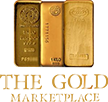Dr. Perry Kyles on The Federal Reserve and the Banking Cartel’s Grip on the Economy
Most people assume the Federal Reserve exists to stabilize the economy and protect consumers. But in reality, the Fed operates in close alignment with private banks, often prioritizing their profits over public welfare.
In Episode 214 of The International Risk Podcast, Dr. Perry Kyles breaks down how the Federal Reserve plays a key role in the banking cartel’s power. This lecture, Module 2, exposes how the Fed manipulates money supply, operates under private ownership, and keeps policies hidden from public scrutiny.
Control Over the Money Supply by The Federal Reserve
The Federal Reserve Act of 1913 created the Fed, giving it the power to issue U.S. dollars and control interest rates. But instead of keeping the economy stable, the Fed uses its power to benefit financial elites.
How does the Fed control the economy?
- Printing Money – The Fed increases the money supply, reducing the value of savings.
- Setting Interest Rates – It controls borrowing costs, favoring banks over consumers.
- Regulating Financial Institutions – It works closely with large banks, often shielding them from consequences.
Example: The 2008 Financial Crisis
Before the crash, the Fed kept interest rates low, encouraging banks to offer risky loans.
When the system collapsed, the Fed printed over $4 trillion to bail out failing banks.
The result? Banks got richer, while millions lost homes and jobs.
🔹 Fiat currency is controlled by the Fed. Gold isn’t. Start investing in physical gold now.
Private Ownership and Conflicts of Interest due to The Federal Reserve
Most people believe the Federal Reserve is a government agency. This is false. The Fed is a private institution controlled by member banks. These banks own shares in the Federal Reserve System, allowing them to influence its policies.
Who really owns the Federal Reserve?
The 12 regional Federal Reserve Banks are privately owned by commercial banks like JPMorgan Chase, Citibank, and Bank of America.
The Federal Open Market Committee (FOMC), which sets interest rates, is made up of Fed officials and representatives from major banks.
Example: The 2020 Stimulus Program
When the economy slowed during the pandemic, the Fed printed over $5 trillion.
Most of that money went to large corporations and financial institutions.
Stock prices soared, but real wages stagnated and inflation hit working families.
🔹 The Fed protects banks, not you. Secure your savings with gold. Shop gold products today.
Lack of Transparency – How the Fed Keeps Policies Secret
Unlike elected officials, Federal Reserve leaders are not accountable to voters. They make decisions behind closed doors without public oversight.
Why is this a problem?
- Monetary policies affect everyone – but citizens have no say in them.
- The Fed’s balance sheet is massive – but few know where the money goes.
- Interest rate changes impact savings, loans, and jobs – but the Fed operates in secrecy.
Example: The 2009 Federal Reserve Audit
In 2009, a limited audit of the Fed revealed it had secretly loaned $16 trillion to big banks and foreign institutions.
These loans were given at near-zero interest rates, while ordinary Americans struggled with debt.
🔹 Don’t trust central banks with your wealth. Read the Gold IRA Guide to protect your retirement.
How The Federal Reserve Policies Favor Banks Over the Public
Every major financial crisis in the last 100 years has benefited banks while hurting ordinary people.
Case Study: The Great Depression (1929-1939)
The Fed restricted the money supply, worsening the economic collapse.
Banks seized homes, land, and businesses at low prices, consolidating wealth.
Case Study: The 2008 Housing Crash
The Fed kept interest rates low, creating a bubble in real estate.
When the market collapsed, the government bailed out banks but left families to struggle.
Case Study: 2022 Inflation Crisis
The Fed printed over $5 trillion during the pandemic, devaluing the dollar.
Inflation hit 9%, increasing prices for food, gas, and housing.
Meanwhile, banks reported record profits.
🔹 Escape the banking cartel’s trap. Read “Gold vs. The Banking Cartel” to learn how.
How to Protect Your Wealth from The Federal Reserve
The Federal Reserve serves banks—not you. The best way to protect yourself is to move away from fiat currency and into real assets like gold.
1. Convert Cash into Gold
Gold retains its value even when fiat currencies collapse.
📌 Fact: In 1971, $1 could buy 4 gallons of gas. Today, it barely buys a third of a gallon. Gold, however, has maintained its purchasing power.
2. Open a Gold IRA
A Gold IRA allows you to protect your retirement savings from inflation and central bank manipulation.
📌 Fact: The U.S. dollar has lost 90% of its value since the Fed was created, but gold has remained stable.
3. Educate Yourself on the Banking Cartel
Banks rely on public ignorance to maintain power. Learning how the system works is the first step to financial independence.
📌 Fact: The banking elite don’t want you to understand why they print money, create inflation, and control interest rates.
👉 Read “Gold vs. The Banking Cartel” to discover the truth.
Final Thoughts
The Federal Reserve is not your friend. It exists to protect the banking cartel, not the public. As Dr. Perry Kyles explains in The International Risk Podcast, the financial system is designed to keep you dependent on debt. But you can break free.
💡 What’s your next move? Start protecting your wealth today.


